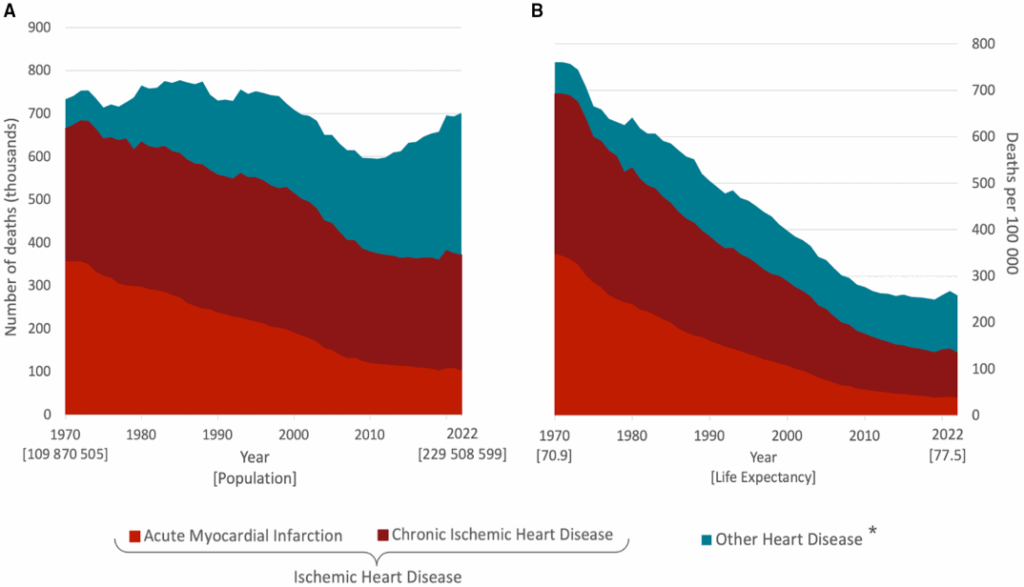The Heart’s Changing Beat
Since 1970, deaths from ischemic heart disease have drastically declined. But deaths from other heart conditions have risen by 81%.

Read Time: 2 minutes
Published:
For decades, public health has focused on preventing the classic heart attack. Emergency room care improved, survival rates rose, and fewer people died from sudden chest pain. But a quieter crisis grew. Many Americans now live longer with hearts that weaken over time instead of facing a single acute event.
A new analysis in the Journal of the American Heart Association examined heart disease mortality rates from 1970 to 2022 using CDC WONDER data. Lead author Sara J. King and colleagues tracked long-term trends among adults 25 and older to see how the share of heart disease deaths has shifted across different types of heart disease.
Total heart disease mortality fell sharply over these five decades, driven in large part by the prevention and treatment of ischemic heart disease. This disease happens when plaque narrows the coronary arteries and restricts blood flow to the heart, which can cause chest pain and heart attacks. From 1970 to 2022, deaths from ischemic heart disease fell by 81%, as shown in the graphs below. Deaths from other heart conditions, like heart failure, hypertensive heart disease, and arrhythmias, rose by 81%.
The rise in these heart-related chronic conditions is not a tradeoff for fewer heart attacks. Instead, it reflects slower disease processes tied to high blood pressure, obesity, diabetes, and aging.

The dramatic decline in ischemic deaths is a public health victory made possible by decades of investment in prevention, acute care, and behavior change. Yet the rise in deaths from chronic heart conditions reveals persistent gaps in managing long-term diseases and addressing upstream drivers of health.
The gains against heart attacks are real, which is why the focus must now shift to preventable chronic conditions driving today’s deaths.
Researchers call for stronger programs that improve long-term management of chronic conditions like diabetes, hypertension, and early-stage heart disease, as well as expanded access to evidence-based therapies. Targeting upstream drivers like high blood pressure, diabetes, and inequities in care continues to be essential.
Without action, the victories of the past 50 years could give way to a slower but equally deadly wave of chronic heart disease.



